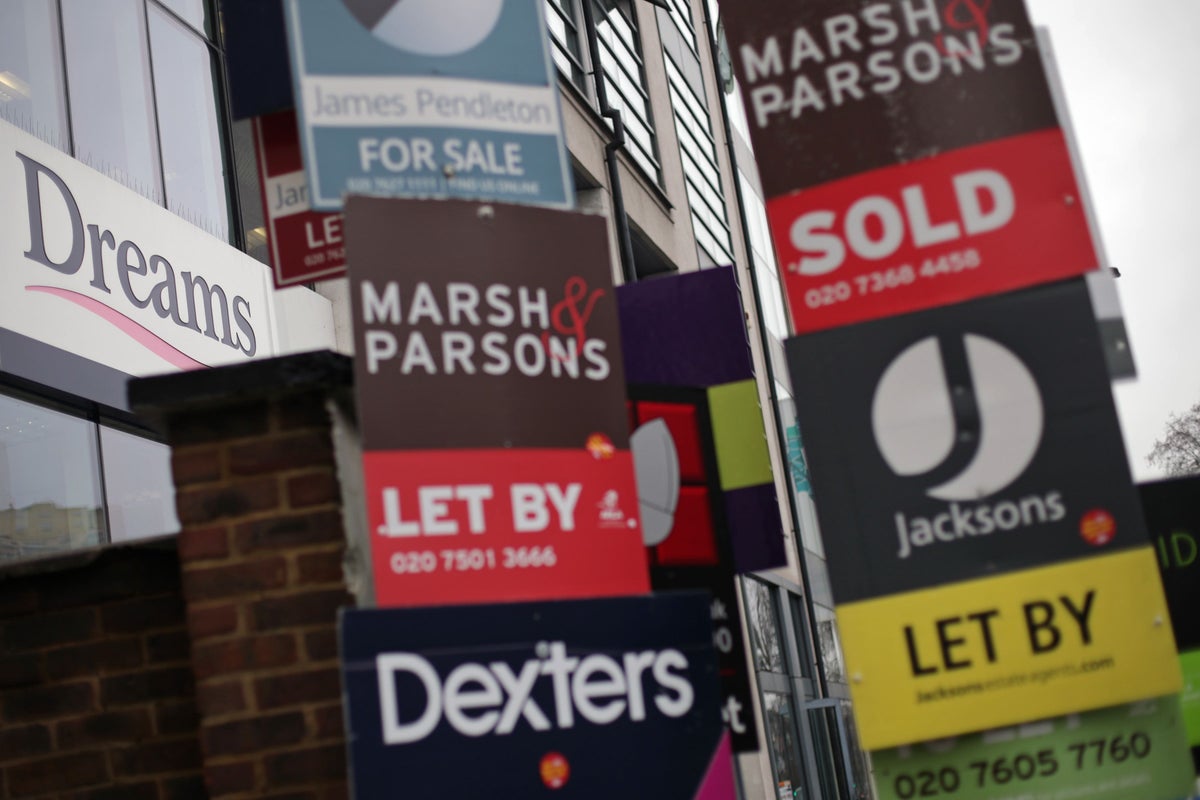
House prices in the UK plummeted by 2.3 per cent in November – the biggest monthly fall since 2008, according to Halifax.
The bank also said the annual rate of house price growth also slowed to 4.7 per cent, from 8.2 per cent in October. Meanwhile, the average UK house price in November was £285,579.
Kim Kinnaird, director of Halifax Mortgages, said: “The monthly drop of 2.3 per cent is the largest seen since October 2008 and the third consecutive fall.”
Mortgage rates jumped following the mini-Budget by Liz Truss and Kwasi Kwarteng in September, with the Bank of England’s base rate rises also pushing up borrowing costs, against a backdrop of households being squeezed by rising bills generally.
Ms Kinnarid continued: “While a market slowdown was expected given the known economic headwinds – and following such extensive house price inflation over the past few years (19 per cent growth since March 2020) – this month’s fall reflects the worst of the market volatility over recent months.
“Some potential home moves have been paused as homebuyers feel increased pressure on affordability and industry data continues to suggest that many buyers and sellers are taking stock while the market continues to stabilise.”
“When thinking about the future for house prices, it is important to remember the context of the last few years, when we witnessed some of the biggest house price increases the market has ever seen.
Property prices are now up by more than £12,000 compared with last year, she explained. Prices are also sitting well above pre-pandemic levels, having gone up by £46,403 compared with March 2020.
“The market may now be going through a process of normalisation. While some important factors like the limited supply of properties for sale will remain, the trajectory of mortgage rates, the robustness of household finances in the face of the rising cost of living, and how the economy – and more specifically the labour market – performs will be key in determining house prices changes in 2023.”
Sharp slowdowns in annual house price growth have been felt most acutely in Wales and the southwest of England, Halifax said.
Both have been key hotspots of house price inflation during the coronavirus pandemic, suggesting that previous drivers of the market such as the “race for space” and heightened demand for rural living are now receding, Halifax said.
The pace of annual property price inflation also slowed in London, which continues to lag other UK regions and nations. The average property price in London remains well above the UK average.
Alice Haine, personal finance analyst at Bestinvest, said: “Britain’s housing market is succumbing to the wider gloom affecting the economy following the dizzying price rises seen during the pandemic.”
Emma Cox, managing director of Shawbrook Bank, said: “The combined effects of double-digit inflation, alongside the UK’s slow march into recession is keeping many would-be first-time buyers away from entering the market.”
Matthew Thompson, head of sales at London-based estate agent Chestertons, said: “Compared with November 2021, our branches have experienced a 23 per cent uplift in the number of properties being sold, however, there has been a significant downward trend in market appraisals being carried out.
“This suggests that, although buyer sentiment is fairly strong, some sellers are still holding off due to economic uncertainty.”
Jason Tebb, chief executive officer of property search website OnTheMarket.com said: “All the upheaval – the macro-economic challenges and the chatter around fixed-rate mortgages, which although edging downwards are higher than we have grown used to – will inevitably impact the confidence of the average property-seeking consumer.
“However, people move for many different reasons and that’s not going to change, even if conditions are more challenging.”
Here are average house prices and the annual increase, according to Halifax:
- East Midlands, £244,429, 9.5 per cent
- Eastern England, £339,683, 7.3 per cent
- London, £549,160, 5.2 per cent
- North East, £173,587, 10.5 per cent
- North West, £229,218, 9.4 per cent
- Northern Ireland, £185,097, 9.1 per cent
- Scotland, £203,132, 6.5 per cent
- South East, £397,562, 7.6 per cent
- South West, £307,750, 8.4 per cent
- Wales, £220,689, 7.9 per cent
- West Midlands, £253,253, 9.4 per cent
- Yorkshire and the Humber, £207,800, 9.3 per cent
With additional reporting from the Press Association







